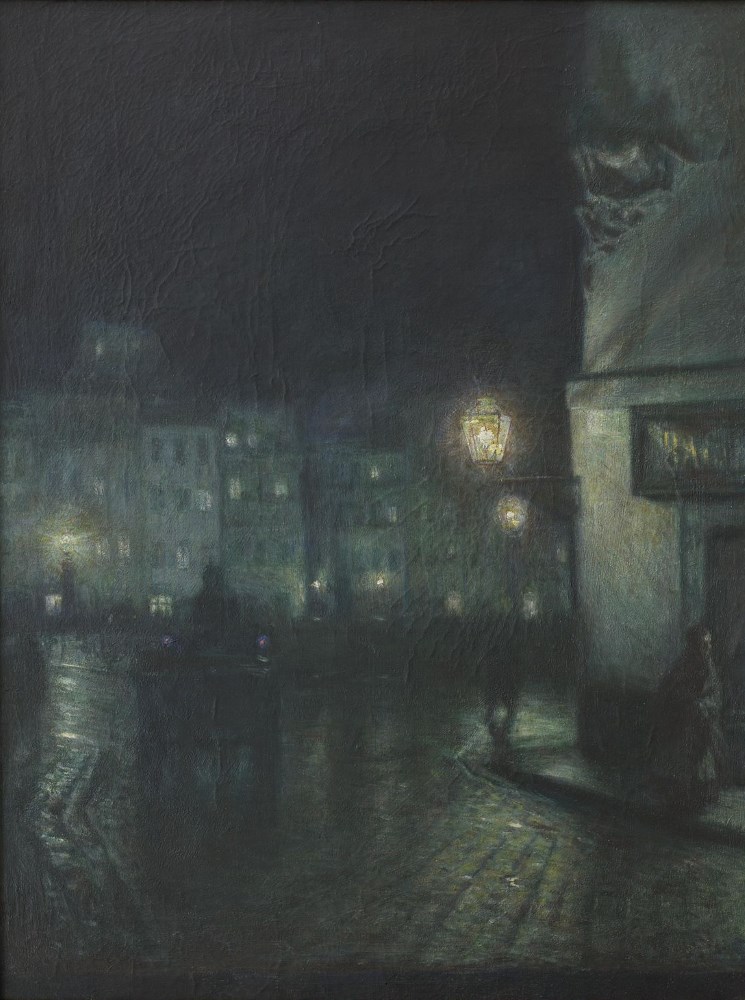Description:
Joseph Pankiewicz (1866-1940) studied at the Warsaw Drawing Class of Wojciech Gerson and Aleksander Kamiński from 1884 to 1885. Thanks to a scholarship, he and Władysław Podkowiński studied at the Academy in St. Petersburg. After returning to the country, the two artists rented a studio in Warsaw. Since 1889, the artists have traveled around Europe in search of inspiration. He was twice appointed professor of the Krakow Academy of Fine Arts, which he opened a branch in Paris in 1925. From 1887 onwards, he exhibited his works both at home and abroad. He began his creativity in the realistic trend, creating pictures of life in Warsaw. Like Władysław Podkowiński, he was influenced by the retrospective exhibition of Claude Monet in Paris in 1889, turning to Impressionism. The works of both artists exhibited in 1890 and 1891 in Warsaw gave rise to Impressionism in Poland. Pankiewicz’s admiration for the French trend did not last long, however. Already in 1892, he began to search for mood-symbolic works, reflecting the inner experiences of the painter. This period was closed around 1908 with a series of still lifes, in which he revealed his fascination with the metaphysical dimension of the object. Shortly after this, under the influence of his friend Pierre Bonnard, with whom he worked in the south of France, but also Paul Cézanne and Auguste Renoir, he turned to modern, post-Impressionist coloristic searches. Developing them until his death, he had an influence on the entire generation of students in Krakow and Paris, creators of the Polish variety of colorism.
Description of the painting:
After returning from Paris in 1892, Pankiewicz dedicated himself to immortalizing the views of Warsaw in a new, impressionist-inspired version. At that time, he created atmospheric nocturnes – representations of landscapes or figurative scenes in the night scenery – depicting the alleys of Warsaw. “Night. Corner of St. City – St. Jan Street in Warsaw” was described as “one of the last paintings painted with an impressionist palette” * The painting is characterized by strong moodiness emphasized by cool colors, flashes of light and a slight haze.
This painting was painted at the moment of the artist’s transition from Impressionism to a more Symbolist current. The work still shows formal influences of Impressionism, however the character of the representation significantly deviates from the assumptions of this trend. The dominant of the work is its mood, and the captured view becomes only a means to emphasize the aura. The foreground opens the viewer to the space of the Warsaw Old Town Square. The eye is led to the square by the St. John’s Street. This space is flanked by a brightly lit corner of the building at the entrance of which the outline of a figure can be seen. The middle of the street is occupied by a carriage introducing the viewer to the space of the second plan, created by a blurred outline of buildings and figures. The composition is kept in cool colors, the blurred contour creates a hazy impression. Pankiewicz paid a lot of attention to the play of light in the dim space. The lighting of the buildings emphasizes the depth of the second plan, while the bright lights of the lanterns on the first plan allow to see the structure of the pavement covered with drizzle.


